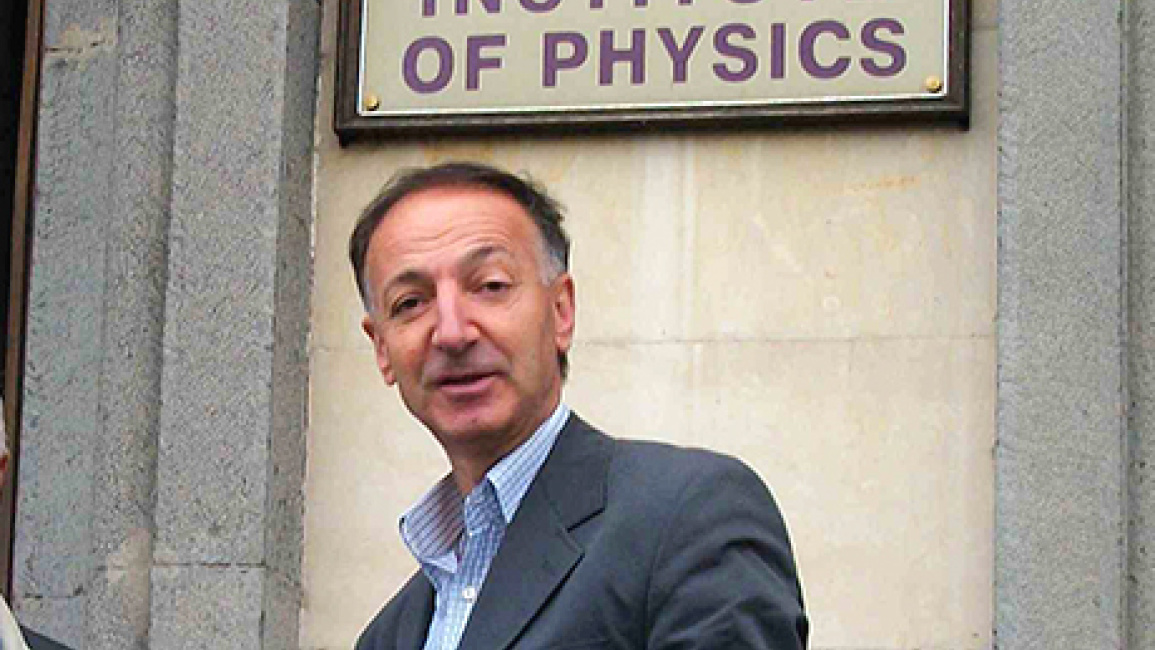- Main
- Node
- THE IDEAS OF YSU PROFESSOR VAHAGN GURZADYAN AT THE FOCUS OF INTERNATIONAL SCIENTIFIC PERIODICALS
February 01, 2019 | 15:31
Science
THE IDEAS OF YSU PROFESSOR VAHAGN GURZADYAN AT THE FOCUS OF INTERNATIONAL SCIENTIFIC PERIODICALS
The research of the scientific leader of YSU Scientific Research Laboratory of Cosmology, Doctor of Physics and Mathematics, Professor Vahagn Gurzadyan and his colleagues is at the focus of attention of the international scientific periodicals.

Influential New Scientist Journal among other important scientific events referred to the new studies of Einstein’s Special Theory of Relativity. The central tenet of Einstein’s theory of special relativity – that the speed of light does not change because of the speed of the observer – has now been proved right more precisely than ever before.
Vahe Gurzadyan and Amur Margaryan at Yerevan State University in Armenia used data from two experiments at the European Synchrotron Radiation Facility in France to look for signs of a changing speed of light. The first experiment measured the speed of a photon in a moving reference frame. A high-powered laser is fired at a beam of fast-moving electrons, bouncing off into a detector that measured their momentum to find the speed of light from the electrons’ frame of reference․ The second experiment measured light speed in a stationary frame of reference. In that test, a particle called an eta meson decays into two photons.
The velocities of those photons give us the speed of light as measured from the meson’s frame of reference, which is not moving. “Both experiments are done very accurately, monitoring a lot of systematic effects and potential sources of uncertainty,” says Gurzadyan. That means that light has the same speed whether the observer is moving close to the speed of light, like the electrons, or not moving at all, like the eta mesons. “The improvement over past measurements is huge,” says Gurzadyan, so Einstein is still right.
Laser-ranged satellite measurement now accurately reflects Earth's tidal perturbations Tides on Earth have a far-reaching influence, including disturbing satellites' measurements by affecting their motion.
This disturbance can be studied using a model for the gravitational potential of Earth, taking into account the fact that Earth's shape is not spherical. The LAser RElativity Satellite (LARES), is the best ever relevant test particle to move in Earth's gravitational field. In a new study published in EPJ Plus, LARES proves its efficiency for high-precision probing of General Relativity and fundamental physics. By studying Earth's tidal perturbations acting on the LARES, Vahe Gurzadyan from the Center for Cosmology and Astrophysics at Yerevan State University, Armenia, and colleagues demonstrate the value of laser-range satellites for high-precision measurements. Specifically, laser-ranged satellites bring increased accuracy in the study and testing of what is referred to in physics as frame dragging.
In this study, the authors collect the observations of Earth's tidal perturbations acting on LARES and compare them with two similar laser-ranged satellites: LAGEOS and LAGEOS 2. The team analysed 3.5 years of LARES laser-ranging data, together with that of the two LAGEOS satellites. To extract frame-dragging from the laser-ranging data for high accuracy, the authors model the main gravitational and non-gravitational orbital perturbations. Frame-dragging is one of the intriguing phenomena of Einstein's theory of General Relativity.
It is an effect on space, and is elastic -- in other words, it will revert back to its original shape and energy state after force is exerted on it-whereby particles exchange energy with it. This has implications for astrophysics.

